
Manuscript Submission with Xtract
Authors can easily upload a manuscript and additional files within Editorial Manager. EM’s Xtract feature automatically extracts key metadata and pre-populates fields in the system.

Authors can easily upload a manuscript and additional files within Editorial Manager. EM’s Xtract feature automatically extracts key metadata and pre-populates fields in the system.
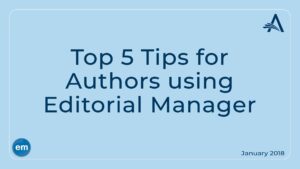
Are you a corresponding author submitting work to an academic journal using Editorial Manager? Here are five tips that will help you work efficiently within the system.

Guiding Reviewer candidates on how to respond to an invitation to peer review a manuscript in Editorial Manager. The exact workflow will vary based on journal-specific settings.

When submitting a final decision on a manuscript via the Editor Decision Form, Editors can access prior versions of the manuscript, view Reviewer commentary, and send a decision letter to Authors.
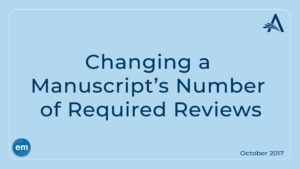
Publications using EM can configure a default number of required reviews for each type of article published by the journal. This feature helps drive useful workflow prompts.

Publications can enable automatic Reviewer number assignment to help manage and order Reviewers, and are especially critical for blinded workflows in which the number is the key identifier.
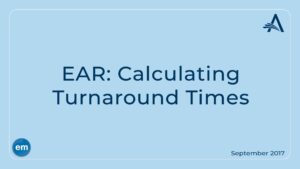
Via EM’s reporting module, publishers can track the number of days that elapse between key workflow events (calculate turnaround times), which can help them evaluate their success, and identify areas for improvement.

Publishers can easily create or modify email letter templates and associate them with key workflow events and roles, and send ad hoc email letters as needed, saving journal staff time.

In the event an Editorial Manager or ProduXion Manager user cannot remember their account password for a specific journal site, follow these simple steps for a quick reset.
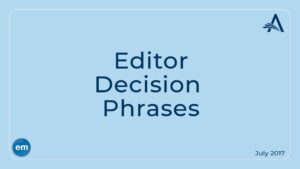
Publications can customize decision phrases, which appear in a “phase-picker” on the Editor Decision Form, maintaining a consistent voice when communicating with Authors, despite working with a large group of disparate editors.

Publications can use Joins to report across multiple data sources from the dozens of tables and views available within EAR. Joins reports can be filtered to further narrow the output of displayed data.
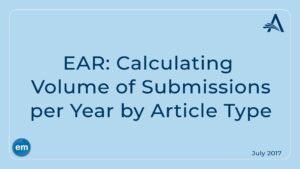
Editorial offices often want to compare current year with prior year data. For example, they may want to see the number of submissions, by article type, for this year compared with last year.